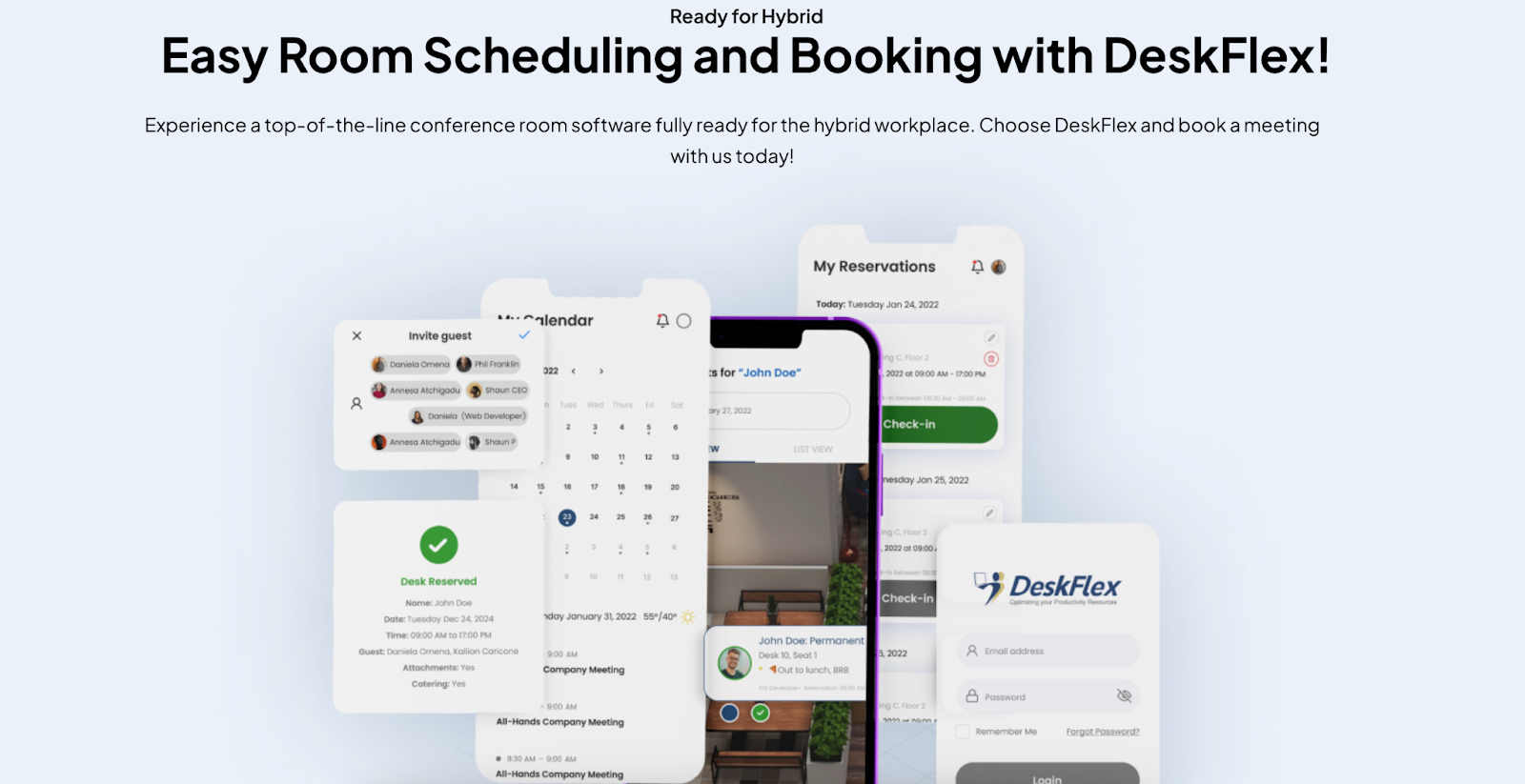Blog

Remote vs Work From Home: What's the Difference?
Remote work has become more than just a trend—it’s a revolution in how people work and live. But with the rise of terms like remote work, work from home (WFH), and the hybrid work model, it’s easy to get confused about what each one means.
While many job seekers are exploring these flexible arrangements, there’s still a lot of misunderstanding around their differences.
In this article, we will break down the key differences between remote work and WFH, a.k.a. flexible work, while examining the pros and cons of each setup.
What Is Remote Work?
The phrase “remote work” is used frequently these days. But what exactly does it mean?
Remote working refers to a setup where remote employees perform their jobs outside of the company’s designated office space.
Unlike the traditional office setting, remote workers have the freedom to work from anywhere—be it a home office, a co-working space, or even a café.
The key distinction here is that remote jobs allow workers to create their work environment while still staying connected to their distributed teams through digital tools.
Some businesses that have set working hours require remote employees to work just during those specified times, even if it means working a night shift.
Other companies are more accommodating in their methods and don’t care how their remote workers do their work as long as they finish all their duties.
Advantages of Remote Work
- Saves on office space, utilities, and other related expenses
- Allows hiring from different geographical areas, increasing diversity and skill sets
- Many employees are more productive in their own work environment
- Remote work offers flexibility that can lead to greater job satisfaction and lower turnover rates
- Easier to adjust hours or manage shift coverage without needing to factor in commute time or office availability
- Reduced need for commuting can contribute to a lower company carbon footprint.
Disadvantages of Remote Work
- Lack of face-to-face interaction may weaken company culture and collaboration
- It can be harder to assess whether employees are staying on task or managing their time effectively
- Miscommunication may arise due to the reliance on virtual tools rather than in-person conversations
- Increased risk of data breaches or security issues as employees work on personal or less secure networks
- Onboarding new hires remotely can be more challenging without hands-on training
- Managing teams across different time zones can complicate scheduling and real-time collaboration
What is Work From Home?
Flexibility in employment refers to the freedom from the standard 9-hour workday. Flex work refers to setting up a flexible schedule that suits your needs.
Most remote teams that work across several time zones use this method of operation. Although remote work isn’t often associated with flexible work, it can also refer to working from home for a short period or during various shifts.
The main benefit of working on a remote setup is designing your workspace to fit your work preferences.
Others prefer to focus in utter silence, while others prefer to work in crowded environments. Setting up a workplace that properly suits your requirements may maximize your efficiency when working remotely.
Advantages of Work From Home
- Workers can manage their own schedules
- Fewer employees coming in reduces wear and tear on office equipment and decreases cleaning or maintenance needs
- For certain types of work, the home office setup may offer fewer distractions compared to a busy office
- Those with caregiving responsibilities or mobility limitations find it easier to participate in a work-from-home arrangement
Disadvantages of Work From Home
- With no informal interactions at the office, there are fewer chances for creative, impromptu brainstorming sessions
- It’s harder to maintain strong relationships and a shared sense of purpose when teams don’t see each other regularly
- Without regular face-to-face interactions, some employers may find it difficult to track progress or address issues in real time
- Home setups vary widely, and not all employees may have a dedicated, quiet workspace, which can lead to distractions or inconsistent productivity
What is a Hybrid Work Model?
The hybrid work model refers to a flexible work arrangement where employees split their time between working remotely and working on-site at the office.
This model combines the benefits of both remote work and in-office collaboration, allowing employees to choose when and where they work based on their tasks or personal preferences.
Employees may work from home or another remote location for part of the week and spend the remainder of their time at the office.
This approach provides flexibility while ensuring that teams still have opportunities for face-to-face collaboration, team-building, and meetings.
The hybrid work model helps offices cut their real estate costs by requiring less office space. Thanks to alternating shifts, hybrid work also allows offices to accommodate more employees, offering the flexibility that modern offices need.
Advantages of the Hybrid Work Model
- Hybrid models reduce the need for full-time office space, cutting down on utilities and rent
- Offers the flexibility to hire from a wider geographic area without needing to relocate employees
- Employees have the choice to work in environments that suit their tasks
- This leads to higher satisfaction and retention, benefiting long-term organizational stability
- Easier to allocate office space, meeting rooms, and equipment with a rotating workforce
- Teams can plan in-office days for brainstorming sessions or team-building activities
- Offering hybrid options can make the company more attractive to new hires and current employees
Disadvantages of the Hybrid Work Model
- Inconsistent office attendance can make it harder to build a strong company culture
- Balancing monitoring productivity between in-office and remote workers can be complex
- Requires dependable systems for remote work
- Coordinating meetings and collaboration across different schedules and locations can be time-consuming
- Managing office space, hot-desking, or shared resources could lead to inefficiencies and frustration
Remote Work vs. WFH vs. Hybrid Work Models
Remote work, work from home, and hybrid work might seem similar when mentioned, but there are key differences between these three. Below are the key ones:
Remote Work vs. Work From Home
At first glance, WFH and remote work may seem like the same concept, but they differ in scope and flexibility.
Remote work refers to working from any location outside the traditional office, which could include home, coffee shops, co-working spaces, or even different cities or countries. The key element is location independence—employees are not tied to any specific location.
Work from home, on the other hand, is more restrictive. It specifically means working from one’s home, limiting the flexibility remote work offers.
While both options eliminate commuting and office-based distractions, a remote job provides more freedom in where employees choose to complete their tasks.
Hybrid Work Model
Hybrid work combines the benefits of both in-office and work-from-home models. Employees split their time between working at a physical office location and working remotely or from home. This approach balances the autonomy of remote work and team collaboration in traditional office environments.
Hybrid models allow for better team cohesion by scheduling in-office days for meetings and brainstorming sessions while still providing the flexibility of remote work when needed.
For employees who thrive on face-to-face interaction but also appreciate work-from-home flexibility, the hybrid model strikes a good balance. Employers also benefit from reduced office expenses and improved staff satisfaction without fully sacrificing in-person collaboration.
How to Develop the Best Remote Work Strategy for Your Business
For various businesses, “remote work” might mean different things. You don’t have to apply one form of remote employment for your company and disregard the others.
It could include both flex time and remote employment. To create the ideal remote work that benefits you and your staff, consider the positive features of your business demands and corporate culture.
1. Collaboration
When coworkers are seated close to one another in an office, it is simple for employees to collaborate.
However, while working remotely, cooperation skills become even more crucial and challenging because you must maintain continual contact with your coworkers and superiors, who may be in various time zones and places.
Remote workers should regularly check in with their remote team and use digital tools such as video conferencing, instant messaging, and collaborative software to keep the workflow moving smoothly.
Companies can foster camaraderie and teamwork by encouraging remote workers to get to know their colleagues better, even across distances.
2. Communication
While remote teams frequently use video conferences and instant messaging, which are helpful, most remote workers prefer asynchronous communication since it doesn’t require real-time response and lets participants participate in conversations according to their availability.
Still, that means that by the time your coworker reads a message you sent, you will not be online to dispel any questions they might have.
Therefore, remote workers must communicate with team members in the clearest, shortest, and most direct manner possible.
This type of communication allows each remote worker to participate in conversations at their own pace, which is particularly useful when employees are spread across time zones.
3. Adaptability
All remote workers usually possess the crucial talent of adaptability to manage a dynamic flexible working environment.
Remote workers must continuously learn to collaborate with a geographically dispersed team, engage with new team members, and adapt to new technologies and tools, such as desk scheduling software or coworking space booking management.
They should also learn to handle work if the internet or their laptop breaks down, find a way to solve or prevent these circumstances, and maintain a healthy work-life balance.
While many people view adaptability as an inherent talent, it can also be progressively developed by understanding the varied demands of your profession and planning effective work schedules that balance your needs at home and work.
4. Teamwork
Remote workers should be equally capable of working individually and in teams. Effective teamwork becomes essential for success in a remote team spread across several places.
Communication, courtesy, dispute resolution skills, and the capacity to hear and comprehend your team members’ viewpoints are the fundamental components of teamwork.
While remote companies provide digital tools for collaboration, such as video conferencing and project management software, it’s up to remote workers to use these tools effectively.
Teamwork helps maintain a productive work environment, whether employees are seated together in a physical office or working from various coworking spaces around the world.
5. Self-Discipline
Remote workers must possess sufficient self-motivation to complete tasks without constant supervision.
In the workplace, your manager would stop by your desk to check on you and perhaps even assist you if you were stuck. However, when working remotely, you must constantly remind yourself of the tasks.
Remote employees should be self-starters who can set goals, meet deadlines, and manage their own time.
A well-developed remote work plan helps remote workers stay on task, ensuring they can deliver results without the constant supervision present in a traditional office setting.
Best Practices for Hybrid Workers
A hybrid work schedule blends the benefits of working both remotely and in the office. However, it also requires proper management to ensure productivity and balance. If you’re navigating a hybrid setup, follow these practices to stay organized and effective:
Set Clear Boundaries Between Work and Home
When shifting between the office and home, it’s important to establish clear boundaries.
Define specific work hours and ensure that your home environment supports your productivity. Avoid blending personal tasks with work during office hours to maintain focus.
Use the Right Tools
Leveraging the right tools is essential for hybrid workers. Tools that enable smooth communication, project management, and time tracking can make all the difference.
For example, scheduling software like DeskFlex can help you plan your in-office days efficiently, ensuring that you’re available for important meetings and collaborative sessions when needed.
Plan Office Days Strategically
Make the most of your office days by focusing on tasks that require in-person interaction. Use this time to collaborate with colleagues, attend important meetings, and engage in activities that are better suited to face-to-face communication.
Save solo tasks for your home days to maximize focus.
Maintain Consistent Communication
A hybrid model can create communication gaps, so it’s important to stay in regular contact with your team. Use tools like Slack or Microsoft Teams to keep everyone informed about your schedule, progress, and any issues that arise.
Optimize Workplace Scheduling with DeskFlex
DeskFlex offers a comprehensive meeting room scheduling system that helps you optimize your workplace scheduling without double bookings or lost reservations.
With features like real-time room availability, integration with popular calendars like Microsoft Outlook and Google Workspace, and mobile app functionality, DeskFlex simplifies the booking process for both employees and managers.
DeskFlex’s room display touchscreens further streamline the process by allowing employees to book, check in, or release rooms directly from the screen. Auto-cancellation features ensure that underused rooms are made available for others.
Whether managing a single location or multiple offices, DeskFlex provides a flexible, data-driven approach to space management, which makes it ideal for hybrid work environments.
Schedule a demo today.
FAQs About Remote vs Work From Home
What is the difference between remote work and working from home?
Remote work allows employees to work from any location outside of the company’s designated office space, such as a coworking space, café, or while traveling as a digital nomad.
On the other hand, working from home (WFH) refers specifically to doing your job from your home. While WFH is a form of remote work, it often requires employees to live near the office for occasional in-person meetings or events.
Does fully remote mean work from home?
No, fully remote does not necessarily mean working from home. Fully remote employees can work from any location they choose, whether it’s from a home office, a coworking space, or even while traveling.
The key aspect of fully remote work is the freedom to choose your work environment, not just working from home.
Is home office the same as remote?
No, a home office is a specific type of remote work environment. Remote work allows employees to work from any location, including coworking spaces or while traveling, whereas a home office refers to working specifically from your home.
Is it better to work remotely or at your workplace?
The decision between working remotely and in the workplace depends on personal preferences, work style, company culture, and normal work pace. Remote work offers greater flexibility and cost savings, but it can also lead to isolation and challenges in work-life balance.
On-site work provides face-to-face collaboration and structured routines but may lack the flexibility remote work offers. Each option has its pros and cons depending on individual needs and job requirements.



















































